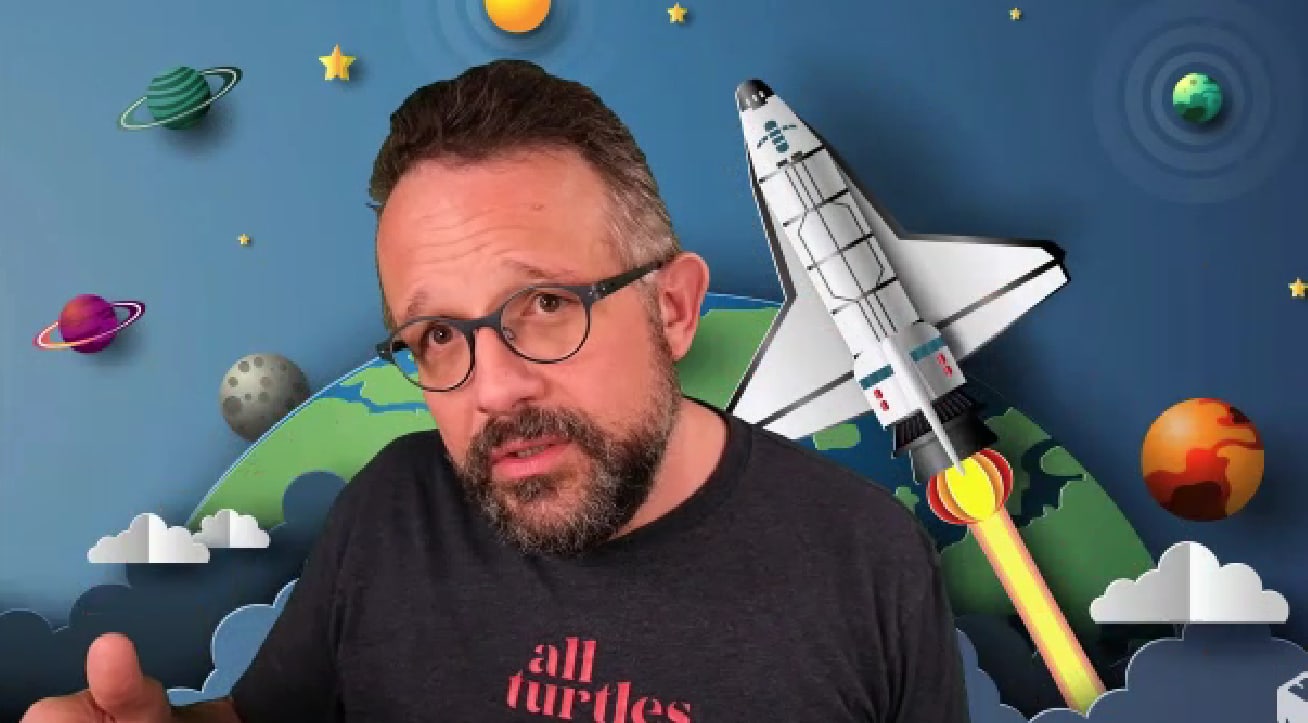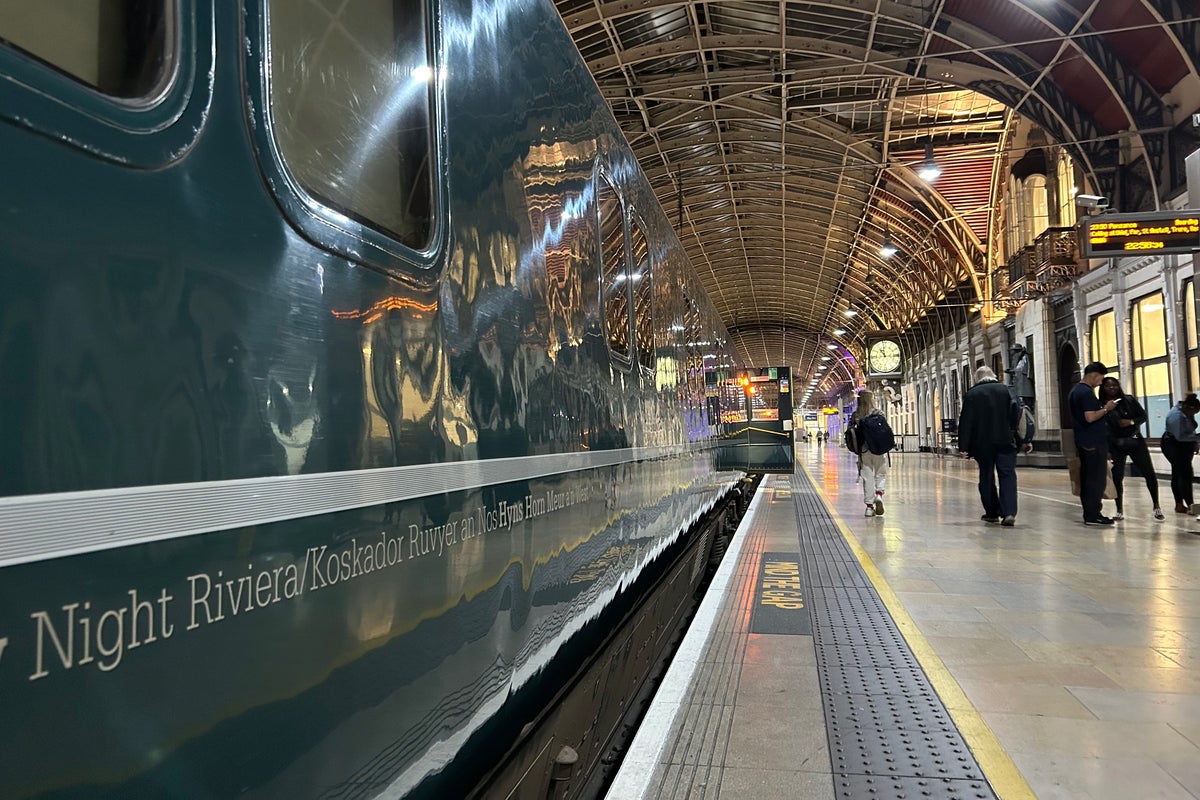The art behind NASA’s scientific space photos
Image: NASA, ESA, CSA, STScIWelcome to the aesthetics of space photography Continue reading…
/cdn.vox-cdn.com/uploads/chorus_asset/file/23762205/JWST_carina.png)
The stunning appearance of the Carina Nebula in the earliest released images from the James Webb Space Telescope owes a lot to Alyssa Pagan. As a science visuals developer at the Space Telescope Science Institute, she is one of the processors who translate the data captured by Webb into something not only visible but beautiful.
Pagan calls the work a “collaboration” between data, aesthetic principles built up over decades of scientific study, and subjective taste. That collaboration is necessary for many reasons, not least the huge distances between Webb and the objects being observed. In order to see this far, JWST uses the infrared spectrum. Because people can’t see infrared, researchers like Pagan have to make choices about how to translate that data into something visible. By understanding these choices, viewers can decode much more information than just the beautiful image itself.
The colors, for instance, are something Pagan often gets questions about. JWST captures multiple exposures of narrowband data, meaning very small ranges of wavelengths within the infrared spectrum that correlate to the presence of specific elements — forms of hydrogen, sulfur, and oxygen. These are then colored according to a principle called chromatic ordering. Shorter wavelengths, like oxygen, are assigned to colors with shorter wavelengths, like blue, and so on. These are then overlaid to form the basis of the image.
Image: Alyssa Pagan
However, because the hydrogen and sulfur bands both correlate with red shades, hydrogen is often given a yellower filter to produce clearer details in the final product. This results in the “Hubble palette” — so called because it was popularized by the earlier telescope.
These images are sometimes called “false” color. But, Pagan emphasizes, the colors are representative of real data. With the right knowledge, both scientists and lay people can read them like a map. In Webb’s image of the Carina Nebula, for example, it’s clear that the lower red portion is dominated by hydrogen and sulfur, whereas the upper blue part is dominated by oxygen.
“I particularly enjoy making things feel more ethereal and magical”
It’s after these base colors are applied that things become “a matter of taste,” says Pagan. She might shift the whole palette up or down the spectrum, making blues appear more purple or vice versa. The contrast will likely be raised, as in the case of the Carina Nebula, making the complimentary colors pop. There are more objective changes made, too, like cleaning up any artifacts like scattered light produced by the telescope, but at this point, two processors may come up with different images. “I particularly enjoy making things feel more ethereal and magical,” says Pagan. “There’s a whimsicality to my approach — because it’s space!”
Efforts to invoke not just a rational but an emotional response to space images aren’t new. Scholar of visual culture Dr. Elizabeth Kessler has literally written the book on how these images invoke the sublime — a sense of awe at something beyond human comprehension — partially by relating them to images we are already familiar with. In Picturing the Cosmos, she investigates how the visual developers on the Hubble team attempted to make understandable the vastness of space by relating them visually to landscapes.
Image: NASA, ESA, and The Hubble Heritage Team (STScI/AURA); Acknowledgment: N. Smith (University of California, Berkeley)
This practice has continued with JWST. The cover image of Kessler’s book is the Hubble image of the Carina Nebula, which was reproduced fairly closely by JWST. In the original, the view is described as depicting “hills and valleys.” The new image is referred to in similar terms, colloquially called the “cosmic cliffs” by NASA.
Presenting the Carina Nebula in this way, though, is also an aesthetic decision. Speaking to The Verge, Kessler highlights the decisions of cropping and orientation. “There are many regions [within the nebula] where you could show the birth of stars. But they chose this region and composed it in a way such that the edge of the cloud creates this horizon line,” she says.
Notably, there is no “up” in space, and while images taken from the ground often orient their images with north at the top, north has no meaning for an orbital telescope. Kessler notes that the image could have been oriented the other way around, turning the dust cloud into something “oozing off your screen.” Instead, it’s the cosmic cliffs, reflecting something familiar rather than strange and potentially off-putting.
Image: NASA, ESA, CSA, and STScI
“The orientation was decided pretty much in the very beginning simply because it felt the most natural,” Pagan says. “It needed to be grounded. It felt like it needed to be a mountain.”
Pagan’s intent is to make the images “digestible” to the everyday viewer while maintaining their magic. Kessler says that the analogies image processors work with are “really helpful. The scale of what we’re looking at, the hugeness of it, it’s beyond human comprehension. The closest thing in our experience are things like these mountains that loom above us.”
The Hubble and Webb aesthetic is not the only approach taken by scientists or professional and amateur astrophotographers. It is popular among photographers on the ground, partly, according to public science communicator Dylan O’Donnell, because using a narrowband approach helps to avoid problems of light pollution. A camera at ground level will be inundated by light from buildings and streets. But by cutting out everything but a very small band, “it allows people right in the middle of a capital city to take images that look like Hubble images,” says O’Donnell. But, just like they make decisions about what to capture and in what orientation, processors can use a variety of color palettes to interpret those narrowband filters. For instance, another popular approach is the “CFHT palette,” named for the Canada France Hawaii Telescope.
Dylan O’Donnell and Dylan O’Donnell
The differences between the Hubble palette and the CFHT palette mainly come from the complications of chromatic ordering. While Hubble gives hydrogen a yellower filter based on a different potential wavelength, CFHT instead pushes sulfur up the color spectrum, resulting in green-purple nebulas that highlight different details. “It doesn’t change the science,” says CFHT astronomer Heather Flewelling. “It just makes certain features more visible.”
There are many different potential combinations of wavelengths and filters, all of which result in different ways of displaying the data — as well as different aesthetic experiences. O’Donnell created a preview tool that helps astrophotographers quickly try out different approaches and lets laypeople see the difference between the many options.
Choosing between filters is a matter of preference. While O’Donnell says most people prefer to stay as naturalistic as possible, his own work also highlights the benefits of using “false” color to bring out the details, as in his two images of the Eagle Nebula — one using true color and one using the Hubble palette. By comparing them, the benefits of the latter for demonstrating structure and depth become clear. The yellow-white dust stands out and appears much more detailed against a blue background in the Hubble palette, while the various shades of pink in the true color version appear flatter and more difficult to parse.
Dylan O’Donnell and Dylan O’Donnell
As useful as it can be, O’Donnell says that the Hubble palette can seem “a little bit clichéd” due to its common use, and he personally popularized a combination approach that captures the green visible light wavelength alongside hydrogen and oxygen narrowbands.
And JWST itself is also producing images in colors that may be unexpected to some. Recently, several images of Jupiter were released, with the headliner making the planet appear blue. Though Hubble took images of Jupiter that appeared simultaneously blue and red, in the newest image, even the famous Red Spot seems white due to reflected sunlight. Pagan (who didn’t process this particular image) says its palette was likely aiming to highlight the aurora, which does appear red in contrast.
Image: NASA, ESA, CSA, Jupiter ERS Team; Image processing by Judy Schmidt.
To Kessler, this indicates that the Webb images may not continue to follow Hubble’s path too closely. “I’m curious to see what will come out of that,” she says. “If more will go that direction.”
Webb’s direction will be a series of decisions made by data and people together, a combination of centuries of visual culture — and billions of years of light traveling through space.

 Astrong
Astrong 
































